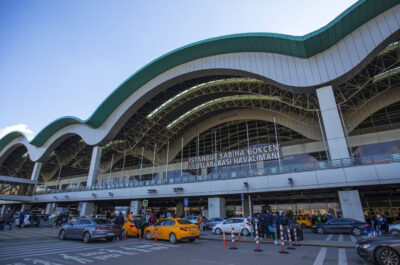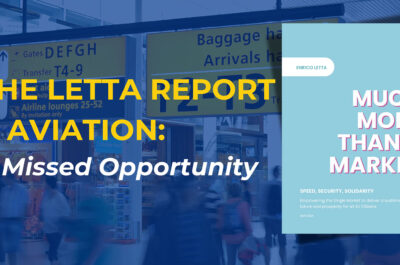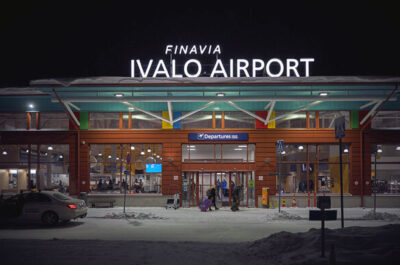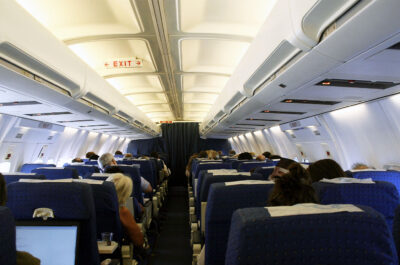
Filip Cornelis, Acting Director Aviation,Directorate-General for Mobility and Transport European Commission is giving his keynote address at the 10th annual ACI Europe Regional.

Olivier Jankovec speaks about the state of Europe's regional airports.
While 2016 still saw regional airports underperforming the wider industry average in terms of passenger traffic growth (+4.3% versus +5.1%) – 2017 is off to a better start, with regional airports now growing at a faster pace (Q1: +7.9% versus an industry average of +6.9%).
CORK, IRELAND – The regional airport community gathers in Cork, for the 10th annual ACI Europe Regional. Airports Conference & Exhibition, hosted by Cork Airport. With over 170 participants from airports, airlines, industry suppliers and institutional stakeholders, the event’s theme is A New Era of Engagement & Digital Innovation – with a focus on addressing the main challenges faced specifically by regional airports across Europe.
Improving traffic
While 2016 still saw regional airports underperforming the wider industry average in terms of passenger traffic growth (+4.3% versus +5.1%) – 2017 is off to a better start, with regional airports now growing at a faster pace (Q1: +7.9% versus an industry average of +6.9%).
Olivier Jankovec, Director General, ACI Europe commented “Many regional airports are now attracting more dynamic passenger growth, but it’s not a free-for-all. Airline partners have become much more discerning about where they establish new routes.
Their focus now tends to be on growing larger & established markets in search of higher yields, rather than venturing into new ones. This makes airport competition for new flights and network development fiercer than ever.”
Developing connectivity
These changes are also driving Low Cost Carriers (LCCs). In fact, these airlines are growing their intra-European route networks at a much slower pace. Over the past 3 years, they have actually reduced their aircraft bases at regional airports by -11%°.
Jankovec said “Network development has become more concentrated and less inclusive – leaving smaller regional airports and their communities potentially exposed to losses in connectivity*. Since 2008, regional airports have seen their direct connectivity grow by just +10.6% – below the gains achieved by other airports. With the LCC revolution now going long haul, new opportunities are arising for regional airports. Cork Airport is a pioneering example of this, as it is about to welcome both Norwegian Air Shuttle and WOW air’s transatlantic services. This is a fascinating development, but down the line, these opportunities will not apply to every regional airport.”
Economic sustainabilty challenge
More than ever, size dictates profitability at regional airports. 53% of airports with less 5 million passengers are loss making – an improvement on previous years, but nevertheless a reflection of the high fixed capital costs involved in operating an airport and the importance of economies of scale.
Brexit
With the clock now ticking for the exit of the UK from the European Union in less than 2 years time – this is becoming a deeply concerning and consuming issue for many regional airports across Europe.
With the legalities of the future relationship between the UK and the EU’s Single Aviation Market yet to be devised, the uncertainty will soon cast a shadow on air route development in Europe, as airlines and airports will soon start planning their networks for 2019.
The EU-27’s regional airports with less than 1 million passengers per year are the most dependent on connectivity with the UK (15.4%). Without a clear resolution of that uncertainty in the near future, air transport in Europe risks facing significant disruption – with regional airports and their communities probably suffering the most.
ACI Europe continues to highlight airports’ exposure to Brexit and the potential fallout for air passengers, to the relevant Brexit negotiation teams.
Looking at wider regulatory challenges, Alberto Martin, Chair of the Regional Airports’ Forum and Director of Aena’s Gran Canaria Airport said “We fully support the European Commission’s Aviation Strategy and its renewed focus on growth, jobs and investment. But we are still calling for a better policy framework for regional airports across the board – from airport charges to safety and security. Given the positive externalities airports bring to their communities, we also need a more realistic and less discriminatory approach to European funding** for transport infrastructure.”
He added “With more point-to-point medium and long haul flights becoming viable thanks to airliners such as the 737MAX and A320 neo, this means that effective aviation liberalisation really is the way forward for airports and their communities. This is about diversifying our traffic mix, offering more convenient direct connections requested by travellers and ultimately enhancing our business resilience.”
Europe’s airports issue warning ahead of EU & US security meeting
The past days have seen much speculation and media coverage over a possible extension by the US of their current ban on the carriage of large personal electronic devices (PEDs) aboard US-bound flights departing from selected Middle East & North African airports to US-bound flights departing from an unspecified number of European airports.
 The past days have seen much speculation and media coverage over a possible extension by the US of their current ban on the carriage of large personal electronic devices (PEDs) aboard US-bound flights departing from selected Middle East & North African airports to US-bound flights departing from an unspecified number of European airports.
The past days have seen much speculation and media coverage over a possible extension by the US of their current ban on the carriage of large personal electronic devices (PEDs) aboard US-bound flights departing from selected Middle East & North African airports to US-bound flights departing from an unspecified number of European airports.
ACI Europe very much regrets this speculation & media coverage – not least, because it reveals a lack of meaningful security cooperation between the EU and the US. This is not conducive to effective security and potentially compromises trust in the aviation security system.
Following a letter sent to the US on 9 May by EU Commissioners Violeta Bulc and Dimitris Avramopoulos calling for a common approach and subsequent bilateral contacts, a meeting will finally take place tomorrow in Brussels between the US Department for Homeland Security (DHS) and the European Commission.
Ahead of this meeting, ACI Europe is issuing a warning about the highly disruptive and far-reaching consequences that a ban on the carriage of PEDs aboard US bound flights from European airports, would have.
59 airports in the European Common Aviation Area* currently have direct services to the USA, with a total of 3.684 weekly flights being operated.
The 5 airports with the largest number of US weekly flights are London-Heathrow (761 flights), Paris-Charles de Gaulle (353 flights), Frankfurt (291 flights), Amsterdam-Schiphol (242 flights) and Dublin (179 flights). Together, these 5 airports account for nearly 50% of the weekly flights to the US. Based on a sample of European airports, the number of passengers carrying PEDs is estimated to be between 60% and 90%.
Disruption
Given the volumes involved, extending the current US ban to European airports would result in significant disruptions, with implications on various aspects on airport and airline operations. Amongst these would be ad hoc screening checks at the gate of each flight, as well as the implementation of related processes to load PEDs into the hold of aircraft. This would require the deployment of a very large number of additional security staff. Appropriate staff are not readily available and would need to be trained. Also, as for anyone working in the restricted area of a European airport, new staff would need to first obtain security clearance from the competent national authorities – a process that usually takes several weeks.
Affected airports would also need to reconsider their gate allocation system – with the objective of re-grouping US bound flights within ‘common gate areas’, where possible. In addition to the extended boarding processing times involved by the extra screening, this would generate inefficiencies in infrastructure capacity utilisation, with potentially spill-over effects on other flights.
Olivier Jankovec said “All in all, if the ban was to go ahead, it would hit the continent’s busiest airports hardest, where a significant portion of US-bound flights would need to be cancelled at short notice. For the flights that could still operate there would be delays, which would compromise onward connections in the US.
Beyond the immediate operational impact, we are concerned about the consequences that such a ban would have on demand for transatlantic air travel – and ultimately connectivity between Europe and the US. The fact that one of the affected Gulf airlines has downsized its operations the US is indeed worrying – and points to a wider & lasting economic impact.”
Time to reset EU & US cooperation on security
ACI Europe is calling on the US and the EU to share between themselves all information in their possession, to jointly review the threat which led to the initial US ban and carefully consider whether any additional security measures are needed for US
bound flights departing from European airports. Should any such measures be considered, these should be purely risk-based – which means that they need to be credible, proportionate and effective to address whatever threat they are supposed to address.
Jankovec concluded “Tomorrow’s meeting should be the opportunity for the EU and the US to reset their cooperation on aviation security. More than ever, given the geopolitical environment we are in, we need the EU and the US to work hand-in-hand on this. This is what the travelling public – and citizens – rightly expect from their Governments, as it is the only way to stand a chance of defeating terrorism.”
° source: ERA & Innovata.
* every +10% in air connectivity yields +0.5% in additional GDP growth (source: InterVistas report on the Economic Impact of European Airports, released in January 2015)
** On the occasion of the 10th Regional Airports Conference & Exhibition, ACI EUROPE also released its new Guide to European Funding Instruments for Airports
Vicky is the co-founder of TravelDailyNews Media Network where she is the Editor-in Chief. She is also responsible for the daily operation and the financial policy. She holds a Bachelor's degree in Tourism Business Administration from the Technical University of Athens and a Master in Business Administration (MBA) from the University of Wales.
She has many years of both academic and industrial experience within the travel industry. She has written/edited numerous articles in various tourism magazines.

























































































































































































